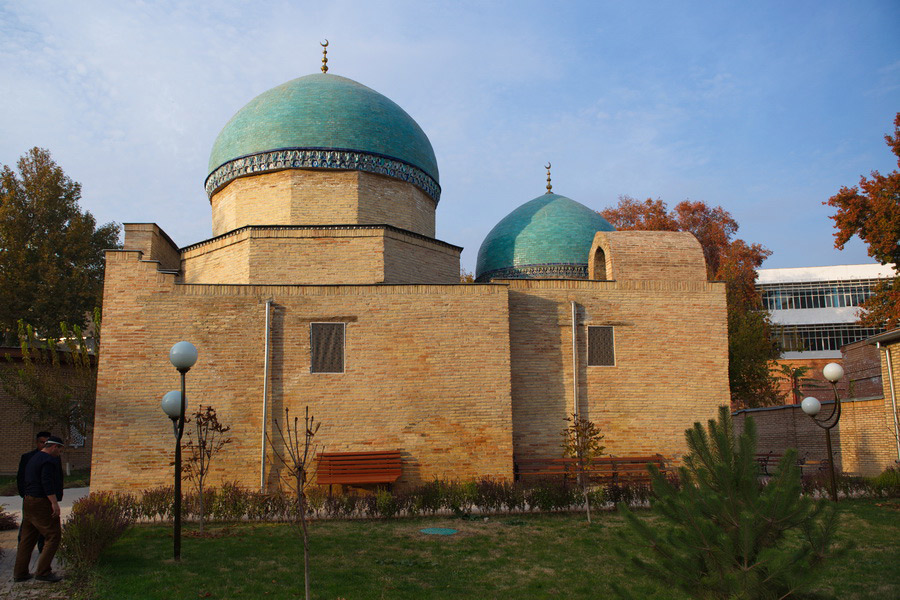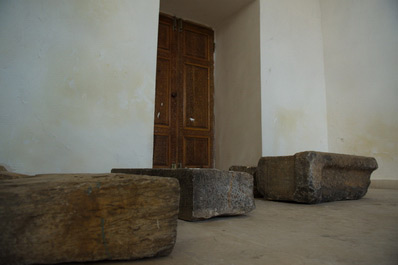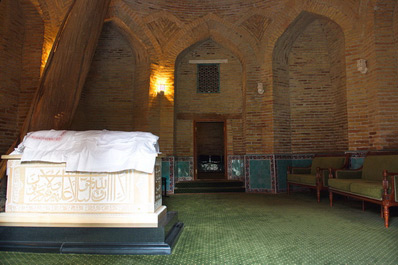Shayhantaur Memorial Complex, Tashkent

Shayhantaur Memorial Complex in Tashkent (14th- 19th centuries) is one of the main historical ensembles in Uzbekistan’s capital. Having taken shape around the grave of the local sheikh Khavendi Takhur, who died in 1355, it now belongs to the Islamic Institute of Uzbekistan and includes three mausoleums and a mosque.
Archaeologists have confirmed that the first mausoleum on the complex was built in the latter half of the 14th century for Sheikh Khavendi Takhur (Shayhantaur), a revered Sufi dervish who traveled to Tashkent in order to spread his faith. At the end of the century, an underground cell for religious retreat known as a chilla hona was constructed near his tomb.
The next addition was the 15th-century Kaldirgoch-Bi Mausoleum, built in honor of the Kazakh ruler of Tashkent better known as Tole Bi. The tomb, built near Sheikh Khavendi Takhur Mausoleum, is recognizable by its conical dome and simple brick exterior, a highly unusual design in Tashkent during that period. The inside consists of the tomb and a prayer and memorial room known as a ziyorat hona.
Also during the 15th century, the Yunus-Khan Mausoleum was constructed in honor of this descendent of Genghis Khan who briefly governed the city. The sepulcher is noted for its plain design and its architectural features which were rare to medieval Central Asia.
In the 16th century, Shayhantaur Memorial Complex became the most popular burial ground in Tashkent, with more than a dozen Uzbek aristocrats being interred here. Due to the demand, a special prayer room was built near the tombs. Several mosques, including the Aurad Mosque seen by visitors today, were not added until the early 20th century.
During reconstruction of the complex in 1924, many of the buildings were demolished, and today only the Khavendi Takhur Mausoleum, Kaldirgoch-Bi Mausoleum, Yunus-Khan Mausoleum and Aurad Mosque remain in the Shayhantaur Memorial Complex of Tashkent. It was also during this period that the surrounding neighborhood was named after the sheikh’s burial place, and even today the Shayhantaur District remains an official region of the capital.
The current Khavendi Takhur Mausoleum is a 20th-century rendition of the original, built on the old foundations and maintaining its basic architectural form. It is dominated by the high dome of the prayer room, while the dome of the adjoining tomb is smaller and lower. The mausoleum’s exterior is noted for its beige bricks, ceramic window latticework and simple portal entrance, while the interior, comprised of the prayer room and tomb, is strangely void of the décor typical in such mausoleums.



